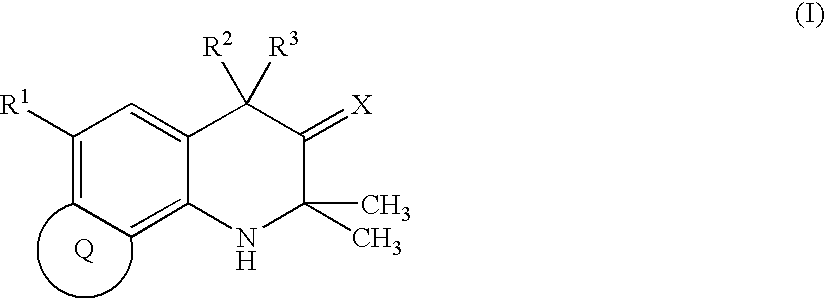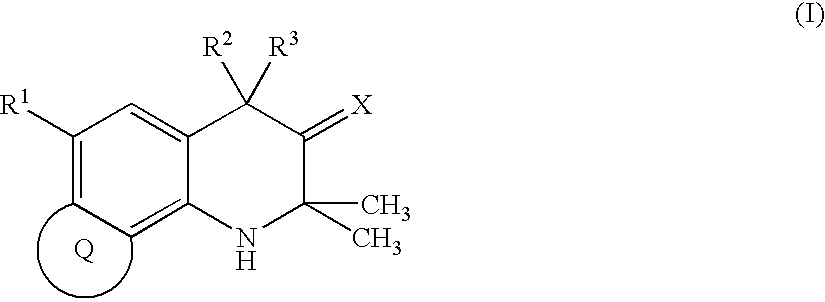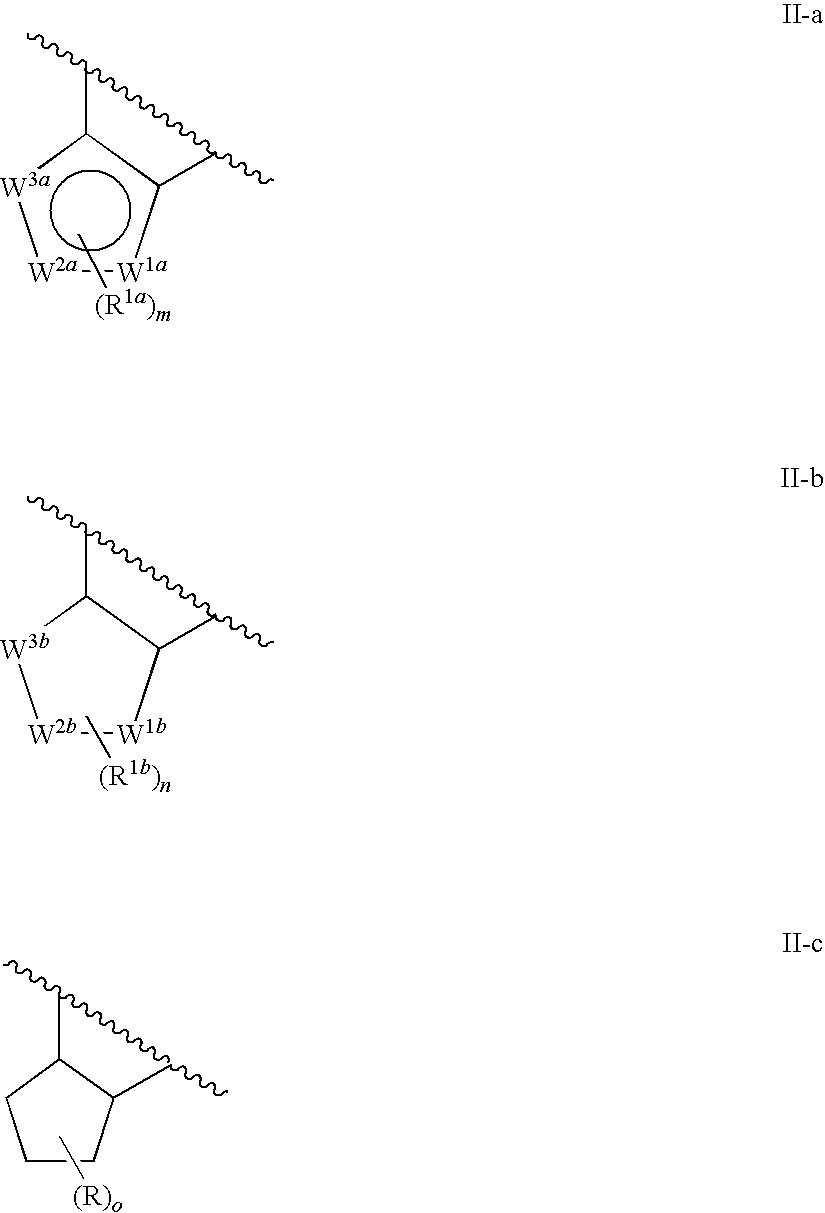Condensed tetrahydroquinoline derivative and use thereof for medical purposes
- Summary
- Abstract
- Description
- Claims
- Application Information
AI Technical Summary
Benefits of technology
Problems solved by technology
Method used
Image
Examples
example 1
1) 2,2,4-trimethyl-2,7,8,9-tetrahydro-1H-cyclopenta[h]quinoline
[0255]
[0256]To a solution of 4-aminoindane (50 g) in acetone (500 ml) was added scandium(III) trifluoromethanesulfonate (10 g), and the mixture was stirred at room temperature for 5 days.
[0257]The reaction mixture was filtered through celite. The solvent was evaporated under reduced pressure and the residue was subjected to normal phase chromatography (elution solvent hexane-ethyl acetate=20:1) to give the title compound (59 g, 73%) as a brown oil.
[0258]NMR (400 MHz, CDCl3) δ: 1.29 (6H, s), 1.98 (3H, s), 2.06-2.13 (2H, m), 2.63 (2H, t, J=7.4 Hz), 2.86 (2H, t, J=7.4 Hz), 5.24 (1H, s), 6.55 (1H, d, J=7.6 Hz), 6.92 (1H, d, J=7.6 Hz).
2) 2,2,4-trimethyl-2,3,4,7,8,9-hexahydro-1H-cyclopenta[h]quinolin-3-ol
[0259]
[0260]To a solution of the compound of the previous step (59 g) in THF (600 ml) was added dropwise 1M borane / THF solution (500 ml) under ice-cooling over 2 hr, and the mixture was stirred at 10° C. for 1.5 hr, and at roo...
example 2
6-(3,5-dimethylisoxazol-4-yl)-2,2,4,4-tetramethyl-2,3,4,7,8,9-hexahydro-1H-cyclopenta[h]quinolin-3-one
[0292]
[0293]Using 4-iodo-3,5-dimethylisoxazole instead of 4-bromo-3-chlorophenol of Example 1, 10) and according to a similar method, the title compound (17 mg, 43%) was obtained.
[0294]NMR (300 MHz, CDCl3) δ: 1.36 (6H, s), 1.44 (6H, s), 2.11-2.18 (2H, m), 2.16 (3H, s), 2.27 (3H, s), 2.68 (2H, t, J=7.5 Hz), 2.80 (2H, t, J=7.5 Hz), 6.79 (1H, s). MS: 339 (M++1).
example 3
6-(3,5-dimethyl-3H-imidazol-4-yl)-2,2,4,4-tetramethyl-2,3,4,7,8,9-hexahydro-1H-cyclopenta[h]quinolin-3-one
[0295]
[0296]Using 4-bromo-3,5-dimethyl-3H-imidazole instead of 4-bromo-3-chlorophenol of Example 1, 10) and according to a similar method, the title compound (21 mg, 94%) was obtained.
[0297]NMR (400 MHz, CDCl3) δ: 1.36 (3H, s), 1.38 (3H, s), 1.44 (6H, s), 2.11 (3H, s), 2.11-2.18 (2H, m), 2.57-2.77 (2H, m), 2.80 (2H, t, J=7.5 Hz), 3.39 (3H, s), 3.59 (1H, br), 6.68 (1H, s), 7.50 (1H, s). MS: 338 (M++1)
PUM
| Property | Measurement | Unit |
|---|---|---|
| Stress optical coefficient | aaaaa | aaaaa |
Abstract
Description
Claims
Application Information
 Login to View More
Login to View More - R&D Engineer
- R&D Manager
- IP Professional
- Industry Leading Data Capabilities
- Powerful AI technology
- Patent DNA Extraction
Browse by: Latest US Patents, China's latest patents, Technical Efficacy Thesaurus, Application Domain, Technology Topic, Popular Technical Reports.
© 2024 PatSnap. All rights reserved.Legal|Privacy policy|Modern Slavery Act Transparency Statement|Sitemap|About US| Contact US: help@patsnap.com










